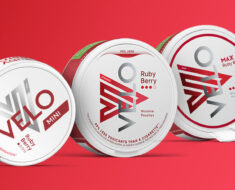Are you a skier or snowboarder looking for the ideal solution to improve your glide over snow? This comprehensive guide provides insights about hard wax versus soft wax, key aspects that affect your cross-country skiing experience. The choice between hard and soft wax may seem overwhelming at first, but this guide will break down all the essentials you need to know before making an informed decision. Learn about why these different types of waxes are used, their respective advantages and disadvantages, and tips on how to apply them successfully.
Soft vs Hard Wax Breakdown
A thorough understanding of both types requires a look at their attributes. This is essentially a soft vs hard wax breakdown. Hard wax is perfect for colder conditions with its high melting point. It forms a durable layer on the ski that enhances glide in colder snow. Conversely, soft wax has a lower melting point and better suits warmer conditions. It sinks into the snow for a better grip under warmer conditions.
Hard Wax: A Closer Look
Hard wax typically comes in thin tubes resembling oversized crayons. It is ideal for cold dry snow as it enhances glide without compromising control. Hard wax gives off less friction against cold sharp snow particles leading to an improved overall performance.
Advantages of Hard Wax
The strength of hard wax lies not only in its suitability for colder temperatures but also in its durability and less-demanding application process. Unlike softer waxes, you do not need an iron to apply hard wax — merely rubbing it onto your skis creates enough friction for effective adherence.
Drawbacks of Hard Wax
Despite its advantages, hard wax also presents challenges. For beginner skiers, applying hard wax evenly can be difficult as it requires practice and consistency. Additionally, in warmer conditions or on wet snow, hard wax can lose effectiveness and compromise your skiing experience.
Soft Wax: A Closer Look
Soft (or glide) wax comes in different forms, most often liquid or paste, and demands an iron for application. This type of wax seeps into your skis base, saturating it and providing both grip and glide in wetter or warmer snow conditions.
Advantages of Soft Wax
Soft wax creates a base that is less susceptible to dirt and dryness. As a result, your skis maintain a smooth glide performance over longer periods. Its low melting point means it especially shines under warm or wet snow conditions where hard wax would falter.
Drawbacks of Soft Wax
The main disadvantage of soft wax is its time-consuming application. Since it requires an iron to melt and apply, the process can be a bit labor-intensive compared to applying hard wax. Furthermore, in colder weather conditions, soft wax may not provide the desired amount of glide.
Choosing Between Hard and Soft Wax
Your choice between hard and soft waxes depends primarily on the snow conditions. Consider factors such as snow temperature when deciding which to use. Remember that no choice is inherently superior; the best option provides the maximum benefit based on specific conditions.
Applying Your Selected Wax
Once you have determined the appropriate type of wax for your needs, learning the correct way to apply it is essential. Use heat when applying soft wax for optimal results. For hard wax, regular rubbing suffices – ensure it is spread without any clumps left behind.
Maintaining Your Waxed Skis
Keeping your skis well maintained after waxing enhances their longevity and performance. To achieve this, it’s crucial to scrape off any leftover wax from your skis after each trip and store them safely away.
Parting Words
A better understanding of hard and soft waxes will hopefully enable you to improve your skiing experience significantly. As a skier, understanding these differences and knowing which wax is right for your needs in different snow conditions can make the difference between a good day on the slopes and a great one. You are now armed with the knowledge you need to hit the slopes successfully and comfortably!






